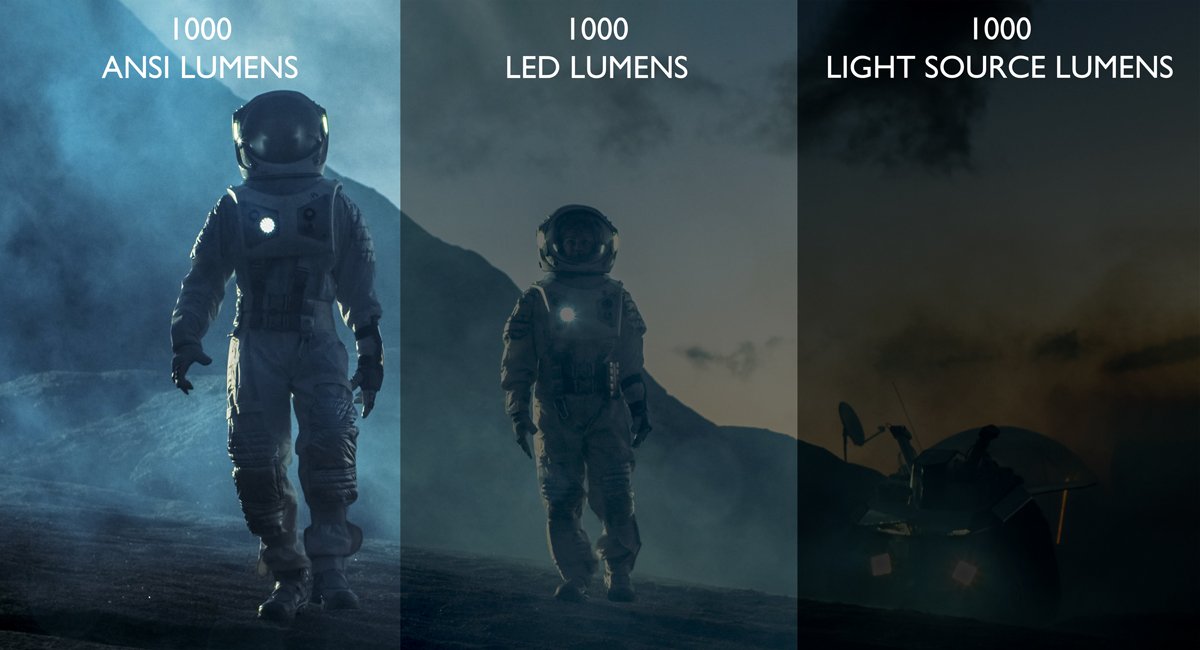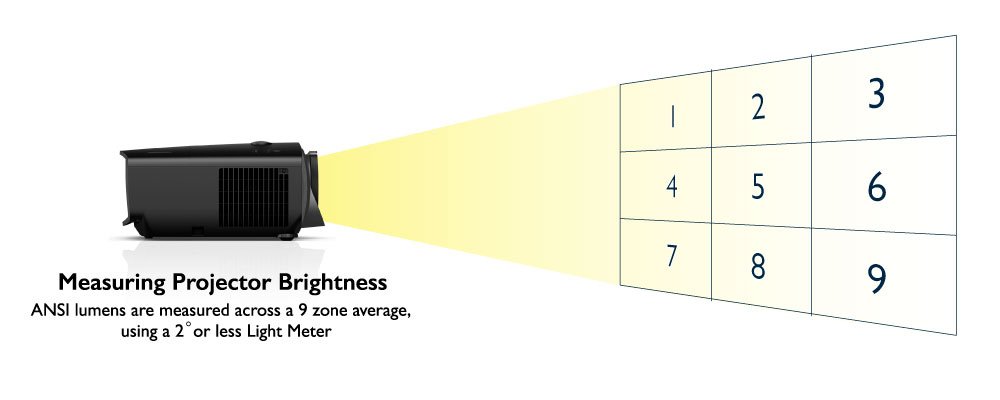Projector
Monitor
Lighting
Digital Display
Job References
“Wait…this projector says its brightness is 1,200 lumens while that smaller projector says its brightness is 3,000 lumens, and it’s cheaper? That doesn’t seem right, is there something I’m missing?”
A common refrain for consumers looking for their first projector is to make sure they get the brightest projector they can. But when many of these consumers actually look into the issue, they end up facing a bigger puzzle: how to make sense of the various brightness specifications listed on the market. This issue is a result of the fact that some brands on the market choose not to use the internationally-recognized brightness standard adopted by the majority of their peers, ANSI brightness, but instead advertise brightness specs different from others. Of these various brightness specs a consumer might encounter, the most common are: the aforementioned ANSI brightness, LED brightness, and light source brightness.

Though the standard unit used for brightness, lumens, is used by all three types of brightness, the differences in their definitions cause their values to fluctuate wildly. This results in instances where a projector, such as a BenQ projector, using internationally-recognized standards, might list a brightness value of 1,000 ANSI lumens, while a competing projector, that actually features an equivalent ANSI lumen value, uses LED lumens instead to list a brightness value of 2,400 lumens. The question then becomes: if all of these types of brightness are measured in lumens, why are their values so drastically different?
Suffice it to say that the reason for this inconsistency is because each of the three types referenced above measures different aspects of a projector’s brightness. For a quick summary of these differences, see the table below:
| ANSI Lumens | LED Lumens | Light Source Lumens |
|
|---|---|---|---|
Origins | ANSI Lumens Developed and defined by the internationally-recognized association, American National Standards Institute (ANSI). | LED Lumens Independently claimed by a small number of brands. | Light Source Lumens Internationally recognized standard. |
Purpose | ANSI Lumens Represent the brightness observed of an image that is projected onto a screen. | LED Lumens Quantify the brightness sensed by the human eye. | Light Source Lumens Indicate the brightness observed directly from a light source. |
Scope of Use | ANSI Lumens Internationally-recognized standard suitable for all projectors. | LED Lumens Applicable only to certain LED projectors from a specified number of brands. | Light Source Lumens Normally used to indicate the brightness of the light source itself, but used by some manufacturers of single-panel LCD. projectors to misrepresent the projector’s overall brightness. |
Calculation Method | ANSI Lumens Average out the measured brightness of 9 distinct regions of a projection screen | LED Lumens Its method of measurement is designed by the companies themselves, which allows them to claim their LED projectors are brighter to the human eye than traditional projectors. Such methods have not been certified by any international organizations. | Light Source Lumens Directly measure the light source’s brightness. |
In general, 1,000 LED lumens converts to 417 ANSI lumens (LED lumen value ÷ 2.4 = ANSI lumens; the conversion rate is based on the manufacture’s publicly disclosed numbers).
1,000 light source lumens converts to 60 ANSI lumens (Light source lumen value x 0.04 to 0.06; the exact conversion rate depends on the efficiency of the projector’s LCD panel for each manufacture).
A quick way to convert the values of one type of brightness to another can be seen below:
Analyzing the tables, one might notice the one constant between them: ANSI brightness. The reason why this is, is due to how each brightness measure is defined.

Based on these definitions, the reason why ANSI brightness acts as the standard for measuring brightness (as shown in the tables above) becomes more apparent. This is because ANSI brightness, as indicated in its name, is the only brightness measure which uses a standard, scientific methodology that is certified by an international body. This gives ANSI brightness measures a reliability that is not present in other brightness measures which may rely on arbitrary factors (as in how the HK effect is measured for LED brightness) or present an indirect brightness value (as in how light source brightness omits the negative effects a projector’s internal components has on its end brightness) to produce misleading/inflated numbers.

The American National Standards Institute (ANSI) is a private, non-profit organization that administers and coordinates the U.S. voluntary standards and conformity assessment system. Founded in 1918, the Institute works in close collaboration with stakeholders from industry and government to identify and develop standards- and conformance-based solutions to national and global priorities.
